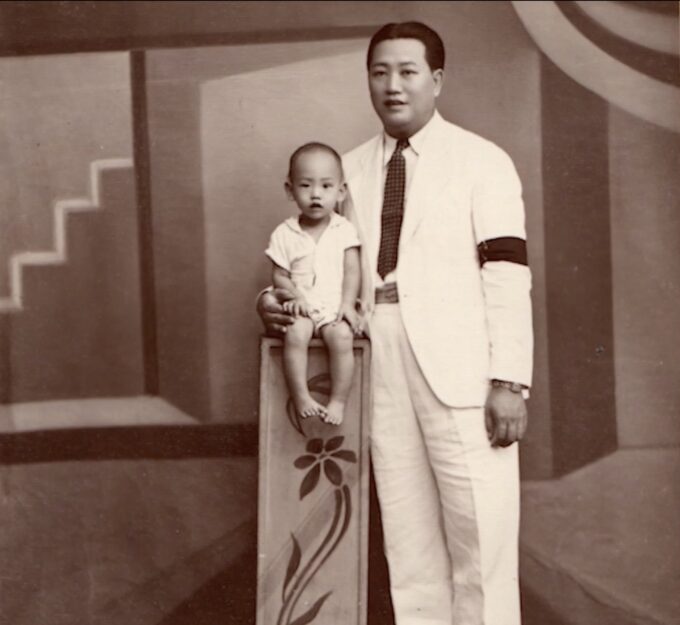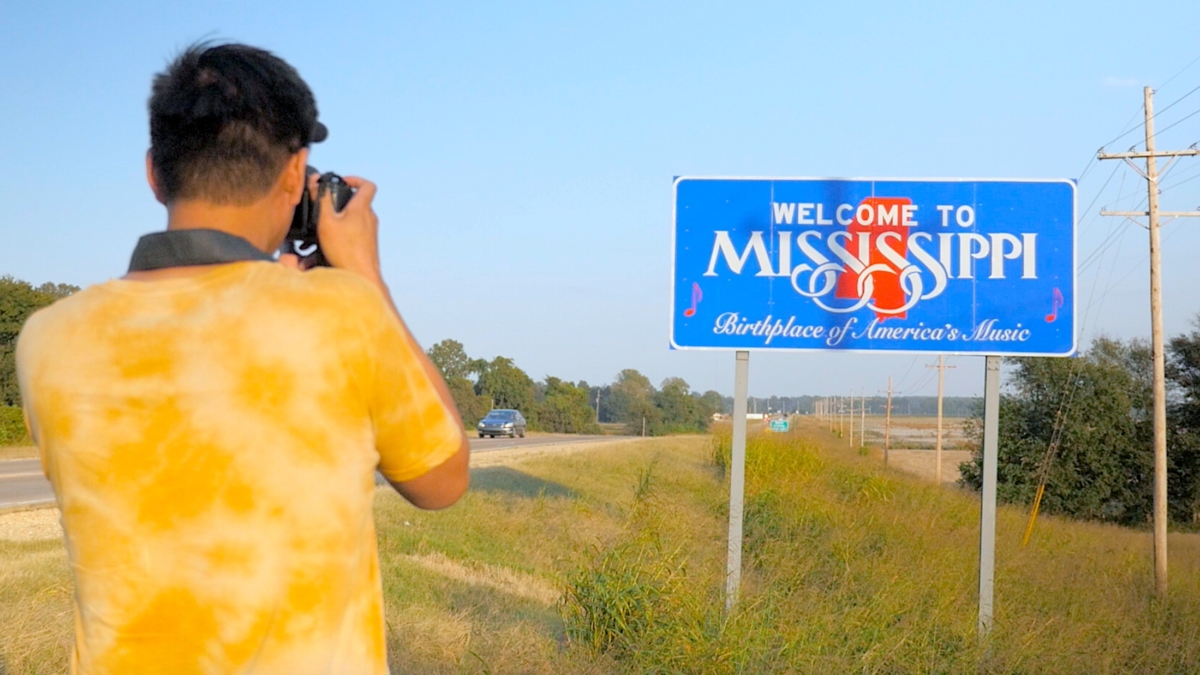Written By Kano Umezaki
In the triptych documentary, “Far East Deep South,” director Larissa Lam and co-producer Baldwin Chiu explore the traumatic, intergenerational consequences of coerced Chinese labor migration in the American South. The documentary is a recent, larger, iteration of their first short film, “Finding Cleveland” (2015), which consists of home-videos of Lam and Chiu’s first family trip to the Mississippi Delta.
After a photo of the gravesite of Baldwin Chiu’s grandfather, K.C. Lou, locates their family’s lineage to the American South, Chiu and Lam get compelled to revisit their family histories, along with their inconsistencies and omissions. “It was not originally supposed to be a documentary,” Chiu says. “It was just trying to figure out our family roots.”
“But then things started to unfold with all these amazing family connections we discovered in the South,” adds Lam. “And not only that, we also began learning about the history of the Chinese, and [the] general Asian population during the Jim Crow era, which is something I never learned in school. I remember learning about segregation but nowhere in our history books did I learn about us.” Through recognizing the peculiar vanishing of Asian American history, Lam and Chiu get compelled to make their history visible, as well as remembered, through film.
“Far East Deep South” begins with Baldwin standing at the San Francisco coast, gazing at proverbial objects of immigration and arrival: the Pacific Ocean, the Golden Gate Bridge and offshore boats. Over the opening footage, Baldwin narrates that he doesn’t quite know his paternal side’s history beyond the fact that his father, Charles Chiu, was born in southern China. Immediately, Baldwin names a visceral feeling of ‘unknowing’ that has permeated across his life, a familiar feeling that gnaws at the psyche of many descendants of Asian immigrants. A pervasive historical absence, or uninterruptible silence, ostensibly prompts Baldwin, Larissa and their family to travel to Mississippi in order to visit the grave of Charles Chiu’s father. “[This documentary] was not only about exploring the lost history of the Chinese in America that rarely people know about, but it became a better story about what it means to be American,” Lam says. “I think this is a theme that many Asian Americans question. Because we’re perceived as perpetual foreigners, but we’re very much a part of American history.”
The documentary is narrated in three parts, each part segmenting a chapter that unravels added mysteries. The first chapter documents their initial trip to Mississippi, which punctuates the start of their pilgrimage back towards their history; a history that was deliberately buried by long-standing alienation, displacement and legislative exclusion. For the first time, Baldwin, Larissa and their family collectively bear witness to K.C. Lou’s burial site, which for Charles Chiu, inaugurates an emotionally fraught state of return. In an interview within the documentary, Charles explains:
“I was one years old and my father took the picture with me. I haven’t seen him since then. […] I see other kids raising up with father and mother. I have no father. That’s just feel something is missing. Something’s supposed to be there, but it’s not there.”

In part, Charles Chiu speaks to the innate feeling of absence that has come to bear a conscious weight. He names, perhaps unintentionally, that he should feel the presence of a memory that he hasn’t witnessed, whether this memory be his father, a germinal image, or the site of a graveyard. As he tugs at his remembered remains, revisiting the omitted people and parts of his life, he simultaneously disturbs the idea of a foreclosed past.
After the abolition of slavery in 1863, Chinese labor was brought to the Missippi Delta as replacements for chattel slaves. Some of these Chinese laborers were coercively brought over from China via U.S.-sponsored expeditions. In other words, Chinese migration into the imperial core was done with the deliberate politicization and exploitation of their bodies and labor.
At one point in the documentary, Baldwin and his brother, Edwin, both speak about how none of the exploitative, migratory practices of exported Chinese labor in the rural South were discussed during their schooling. The imposed blanks in American history, marked by the hegemonic gaze over-looking the back-bending labor of racialized peoples, places Asian Americans in a cruel disposition of being rendered invisible yet hypervisible –– seen but not recognized, understood, or acknowledged.
Lam and Chiu also include interviews from community organizers, diasporic Chinese people in the Mississippi Delta, former friends of K.C. Lou, Asian American academics and politicians to puzzle together a visible non-Black Asian American presence during the years of the Jim Crow segregation laws. Through archiving the oral histories of the diasporic Chinese enclave in Mississippi, Baldwin and Larissa weave together the Chinese American history of migration and racialization across transnational spaces. “It’s very important for us to know we have a shared history, especially with the Black community,” says Lam. “Because normally segregation has only been defined as a Black and white issue.”
As a settler-colonial state built and evolving off of anti-Blackness, American history has been hyper-imaged into a Black-white racial paradigm that obfuscates the inter-connected yet disparately different lived experiences of non-Black Indigenous, Latinx, and Asian American racialized peoples. The consequence is a coupling of historical amnesias made possible by anxiously repressed pasts. “If we can’t see our shared history together, if we can’t see our past together, then how can we see our future together,” says Baldwin.
One omission from the traditional orations of history is how segregation laws affected Chinese laborers in the rural South, as well as Asian Americans more broadly situated across the United States. Carolyn Chan, past president of the Chinese American Citizens Alliance, says in the film that she wasn’t allowed to go to white schools because of her race, and states how this was the case for other Asian children until the passing of Brown v. Board of Education in 1954. Chan’s experience gives presence to a suppressed Asian American past, one which locates Asian American history away from an assimilative form of settlement, and instead towards a racialized, excluded and segregated lived experience. “We definitely hope the film opens up more conversations, and not conversations of hostility,” Baldwin notes. “We want people to seriously know there were laws that tried to suppress us, and that there were consequences to it.”
Lam and Chiu weave their family history into a larger historical narrative of violent repression under the Chinese Exclusion Act of 1882, as well as the exploitative migratory practice of Chinese labor. Though the Asian diaspora –– as well as diasporas more generally –– may be characterized as a never-ending process of continual displacement, the act of documenting an unwitnessed history helps ground them, as well as us, into a memory and lineage that articulates itself through both discovery and invention. “For us to not know our history means we’re going to lose our family,” says Baldwin. “If we find our history, if we have it, then I think the lessons of the past become easier to understand and learn; and it also becomes easier to share so that other people can join you in that understanding.”
In a rectifying way, Lam and Chiu’s documentary serves as the site of, or passage into, a collective reconstruction of their family history. It serves as evidence, as eyes, to a lineage and survival that traces each of them into their moments today.
“Far East Deep South” makes its East Coast premiere at the 43rd Asian American International Film Festival. For ticket and screening information, please go here.

